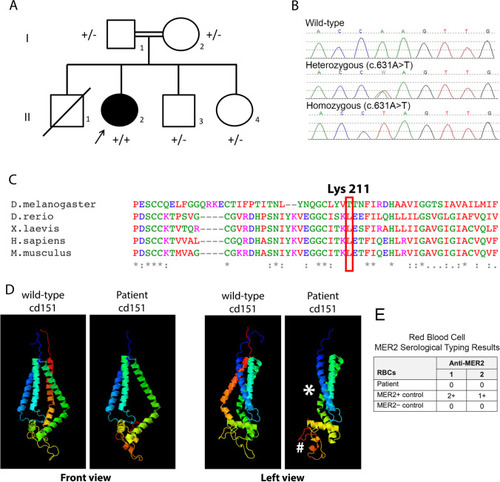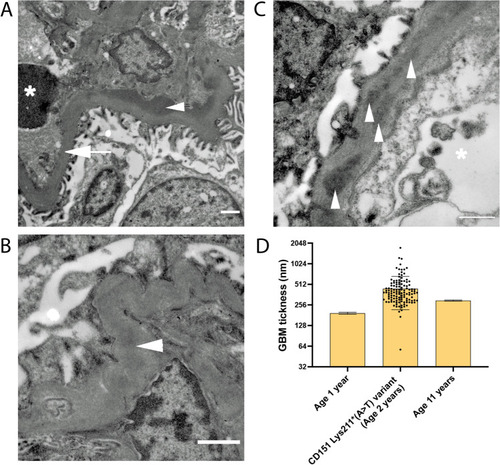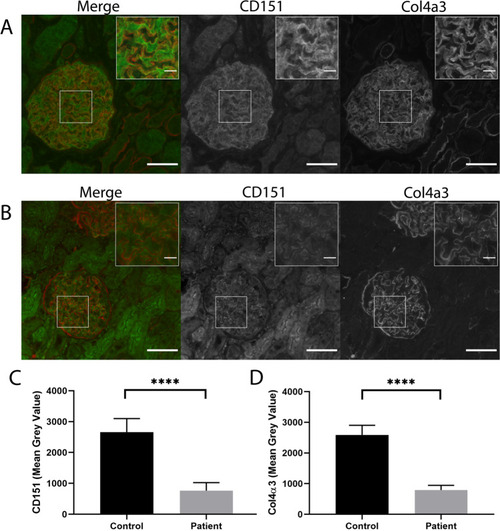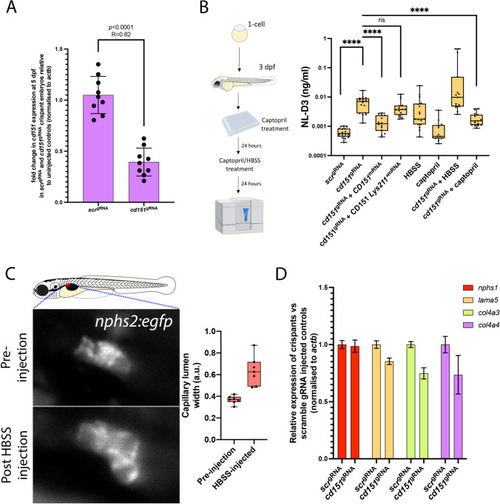- Title
-
Basement membrane defects in CD151-associated glomerular disease
- Authors
- Naylor, R.W., Watson, E., Williamson, S., Preston, R., Davenport, J.B., Thornton, N., Lowe, M., Williams, M., Lennon, R.
- Source
- Full text @ Pediatr. Nephrol.
|
Pedigree, genetic sequence, conservation, protein structure. A) Pedigree of a family affected with nephropathy, nail dysplasia and skin lesions and a |
|
TEM images showing changes in GBM in patient with loss of function variant in the |
|
Immunofluorescence images of CD151 and Col4α3 in normal human kidney glomeruli and a patient with loss of function variant in the |
|
Depletion of |




